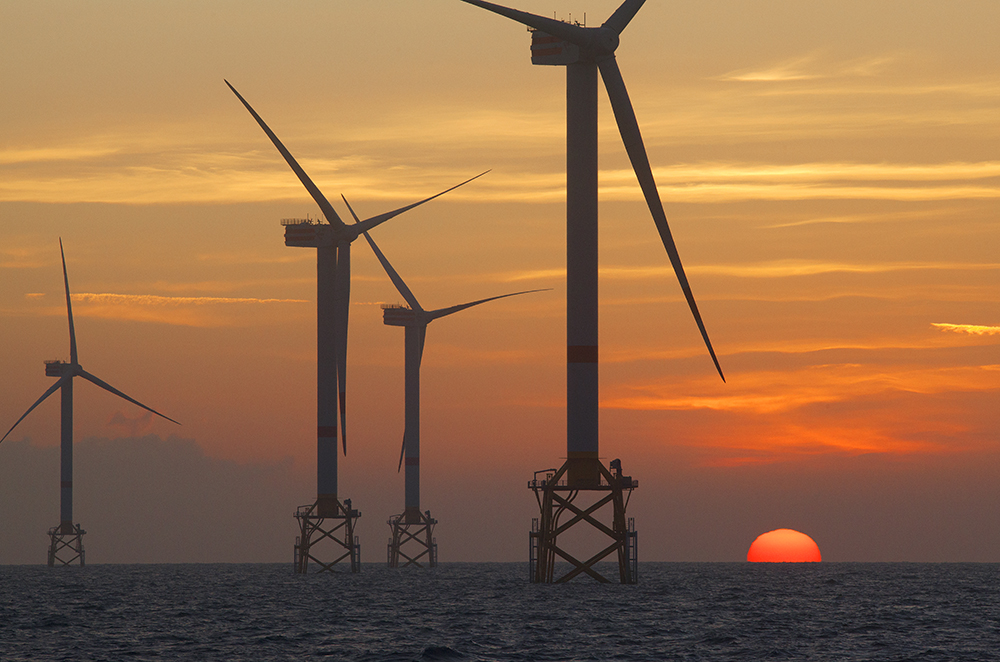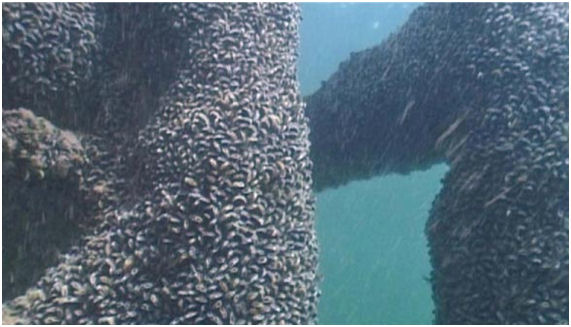









 Jacket Foundations for Wind Turbines Fisker Jensen, J. (2010)
Jacket Foundations for Wind Turbines Fisker Jensen, J. (2010)The next step to extend the use of wind energy is to develop and build cost-effective offshore wind farms. The reason is that wind resources are greater offshore and the amount of energy that can by captured by wind farms in the sea is significantly higher than in onshore areas. As a result, off-shore wind industry is moving towards wind farms located in areas further from the coastline where wind blows at higher velocities and more frequently. This means the deployment of turbines in ever deeper waters.
From the energy production point of view, it is interesting to consider larger wind turbines that can capture more energy from the wind. These will have higher rated power values and their annual energy production will be much greater. Taller towers will allow them to intercept stronger winds, and should lead to increased capacity factors. However, large OWTs (Offshore Wind Turbines) must be able to withstand harsher loading conditions due to the higher wind speeds and more extreme wave conditions in areas far from the shore. Press here....
The current necessity to increase the power output from renewable energies has encouraged offshore the wind farms be moved progressively further offshore where there are higher wind speeds and, consequently, a higher power output can be obtained.
 Jens Christensen. Common mussel on turbine structures at Horns Rev. Danish Offshore Wind - Key Environmental Issues.
Jens Christensen. Common mussel on turbine structures at Horns Rev. Danish Offshore Wind - Key Environmental Issues.The identification of the environmental impact associated with each of the phases of an OWF project is based on the idealization of generic effects. Rigorous impact identification can only be addressed through the contextualization of the wind farm, both in terms of technical characteristics and energy efficiency, as well as location and extent of the farm. The main differences of wind farms installed offshore are laid in the highly technical issues of the construction, operation and maintenance phases of the projects. The possible impacts of decommissioning are unknown due to lack of experience. New solutions should ideally be found in order to increase the life time of the system and minimize the environmental impacts. Press here....

 Model a typical grout joint used in the industry under design loading conditions using Finite Element analysis.
Model a typical grout joint used in the industry under design loading conditions using Finite Element analysis. Compare existing standards for the design of grout joint connections.
Compare existing standards for the design of grout joint connections. Estimate wave and wind loads in an OWT supported by a jacket substructure.
Estimate wave and wind loads in an OWT supported by a jacket substructure. Review of environmental impacts during the construction and operation of OWFs.
Review of environmental impacts during the construction and operation of OWFs.